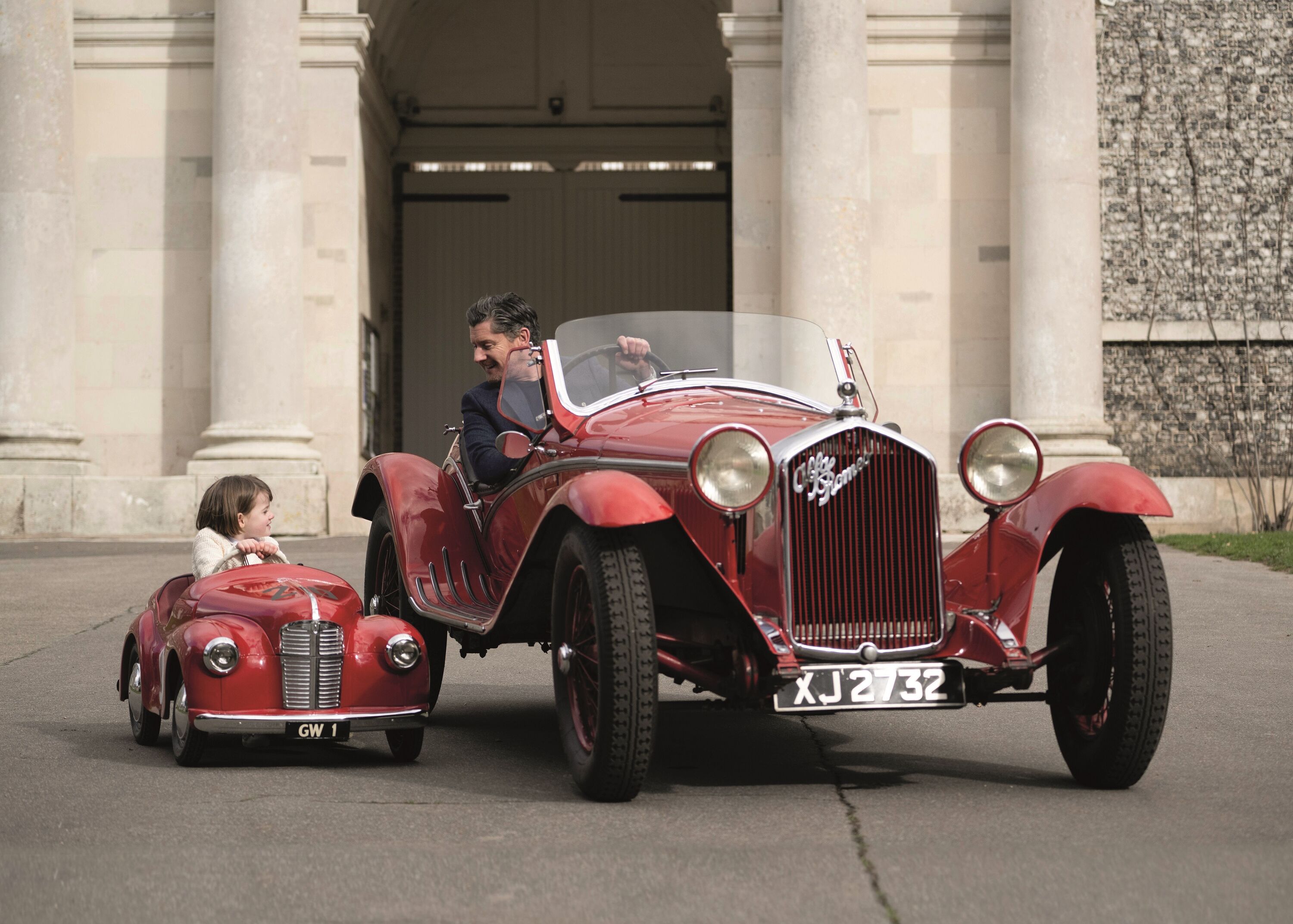Seven automotive hits of 1980 – Axon’s Automotive Anorak
In my previous weekly Anorak, I highlighted a handful of notable cars first launched 40 years ago, the ‘duds’ that have (mostly) long since disappeared into obscurity.
For the second part of this review of the car class of 1980, this week I’m focusing on the ‘dudes’ – seven of the more successful new model releases and related derivatives that originally appeared 40 years ago. These 1980 debutant dudes are the cars that made a refreshing advancement and change, bringing welcome enhancements to the motoring world, both for customers and the manufacturers that developed and introduced them. So, the then-new Audi quattro, or the Morris Ital? Not much of a contest really.

Audi quattro and Coupe
Arguably the star new car of 1980, the quattro (with a lower-case ‘q’ at Audi’s insistence) caused a sensation when it was first revealed at the Geneva Motor Show 40 years ago.
Inspired by the all-wheel-drive system of Volkswagen’s Iltis military ‘jeep’, the quattro revisited and refined the concept of an all-wheel-drive performance coupe, able to deliver maximum power equally to all four wheels, as pioneered by the Jensen FF in 1966, and imitated in the 1970s by Subaru for its more practical L-Series 4WD passenger saloons, coupes and estates.
Sharing its Geneva launch, plus most of its bodywork, with the ‘regular’ but overlooked Audi 80-based front-wheel-drive Coupe, Audi developed the turbocharged quattro to exploit an important recent change in motor sport regulations, allowing all-wheel-drive to be officially used in rallying for the first time
The quattro made its rallying debut a few months after its Geneva Salon launch in the 1980 Janner Rally in Austria, the Audi developing 304PS in its early competition form. By 1981 the quattro’s substantial impact on the world of rallying was beginning to be felt, with Audi team driver Michele Mouton becoming the first female driver to win a world championship rally behind the wheel of a quattro.
Within a few years the quattro was dominating world rallying, taking multiple victories, with Audi increasing the rally weapon’s power output to 355PS before unleashing the 450PS short-wheelbase Sport quattro homologation special in response to stronger all-wheel-drive competition from Peugeot, Lancia, MG and more, prompted by changing Group B regulations.
Production of the regular road going quattro lasted until 1991, with almost 11,500 examples being made, this modest quantity not really reflected the Audi’s impact on changing the shape of performance motoring (and world rallying) for ever more. Lost in the shadow of its mightier quattro sibling, the boxy ‘plain Jane’ Coupe was replaced by the more rotund three-door B3 model in 1988.

Fiat Panda
Although the polar opposite of the Audi quattro at almost every level (despite an all-wheel-drive derivative being available), the Fiat Panda was as equally significant as the Audi, as the small yet mighty Italian hatch redefined basic ‘everyman’ motorised mobility for the late 20th Century. It updated the ‘less is more’ simplicity of rustic motor cars of the past, such as the Ford Model T, Citroën 2CV and Renault 4, all packaged in a cleverly conceived cube.
With all-flat glass and body panels, thin and lightweight machine-washable seats, a versatile multi-position ‘hammock’ rear bench, rugged fluted lower panels and a cheery design, the Panda really was the ideal solution to modest motoring 40 years ago. The Ital Design-developed Fiat was even considered the finest and favourite car ever created by none other than the acknowledged vehicle styling genius Giorgetto Giugiaro. Claimed by Giugiaro to be his proudest product, the Turin design guru is so enamored with his original 1980 Panda that he keeps an early example in his office for inspiration.
With an exceptionally looooong 23-year production run, millions of Pandas have been sold, including countless 4x4 derivatives, the versatile ‘mountain goat’ go-anywhere model that is still a common sight at Alpine ski resorts and remote Italian vine yards and olive groves. A true modern day classic, the original 1980 Giugiaro Panda has created a great legacy for Fiat; a characterful entry model that has gone on to spawn two equally successful five-door generations, with an all-new electric Panda rumoured to be following in 2021.

Austin Metro
Considered by many observers to be the car that saved BL (British Leyland), the cash-starved vehicle group’s first hatchback was a crucial model, created to see off established overseas B-segment supermini competitors such as the Fiat 127, Renault 5, Volkswagen Polo, plus the UK-built Ford Fiesta, Vauxhall Chevette and Talbot Sunbeam.
Launched to huge fanfare at the October 1980 British NEC Motor Show as the Austin Mini Metro (the three-door hatch borrowing considerably from the beloved Mini that it was set, but failed, to replace, including its aged A-Series engine and four-speed manual ‘box), the model quickly found favour (in the UK) with the ‘Mini’ part of its name soon disappearing, and important additions being rolled-out, such as the MG Metro ‘hot hatch’ variants (including the short-lived Group B 6R4 rally weapon), luxurious Vanden Plas and automatic variants, plus a five-door body option.
Ten years after its launch, in 1990 the Metro was facelifted to become a Rover, with a heavily reworked version introduced in 1994 as the Rover 100, retaining much of the Metro’s coachwork aft of the windscreen A-pillars, but vitally replacing the venerable A-series motor with Rover’s acclaimed new K-series engine. An abysmally low EuroNCAP crash safety rating saw the last Metro-derived Rover 100s built in late 1997.

TVR Tasmin
Since introducing its first original coupe body style in 1956 as the Jomar, specialist British sports car maker TVR essentially stuck to the same basic fastback form until 1980, gradually evolving its distinctive shape into a bewildering array of powerful coupes, from the late-1950s Grantura, via the Griffith, Tuscan, Vixen, etc., through to the late-1970s M-based Taimar models.
The surprise introduction on an all-new TVR at the January 1980 Brussels Salon came as quite a shock to the Blackpool marque’s legion of loyal fans, as the new model, named the Tasmin 280i, was a modern coupe with a dramatic and controversial wedge profile, created by former Lotus engineer Oliver Winterbottom.
Initially offered only as a two-seater coupe with fuel injected 2.8-litre Ford V6 power, the Tasmin’s fine chassis and handling were immediately praised, but the car’s contemporary wedge styling kept many traditional TVR admirers away. TVR reacted swiftly by launching a more affordable 2.0-litre Tasmin, plus an elongated 2+2, and even a Turbo, none of which managed to win over more potential buyers.
With funding scarce, TVR soon came under new ownership, now with the charismatic Peter Wheeler at the helm. He quickly replaced the Tasmin’s Ford V6 engines with the mightier Rover V8 motor, introduced a new drophead convertible derivative, and dropped the Tasmin tag for the numeric 350i, to better reflect the improved wedge model’s enlarged engine capacity. Latter derivatives added ever more powerful V8 engines (390SE, 420SE, 450 SEAC, etc.) with the Tasmin’s initial coupe body eventually cancelled in favour of open drop tops only. These increasingly brutal TVR wedges sealed the Company’s reputation as the 1980s progressed for building serious ‘take-no-prisoners’ sportscars.

Ford Escort Mark 3
Against more progressive front-wheel-drive opposition from the Volkswagen Golf, Citroën GS, Alfasud, and Renault 14, by 1980 Ford’s staid five-year-old Escort Mark 2 was looking decidedly outdated and out-classed. A suitably modern successor was needed, and needed fast to keep Ford active in the toughly-fought C-Segment. Project Erika was the result, Ford’s first Golf-class Escort front-drive hatchback with a fresh, modern style, plus interesting sporting derivatives immediately available from the September 1980 launch (such as the XR3) to add ‘sex appeal’.
The third-generation Escort was an instant hit, the new Ford soon topping the UK’s new car sales charts, where it remained throughout the 1980s, becoming that decade’s best-selling car in Britain.
Convertibles, saloons (Orion), diesels and more overtly sporting derivatives (RS) were soon added to the Escort Mark 3 range, ensuring the on-going success of the model, ahead of it being replaced by the majorly inadequate new 1990 Escort, the model’s disappointing last gasp before being axed for the highly capable Focus of 1998.

Matra Murena
With tres Francais three-abreast seating, plus an exciting mid-engined configuration, the Matra Bagheera of 1973 was a stylish sporting fastback coupe with an exotic specification, on paper at least. Puny underpowered and crude Simca-sourced push rod engines seriously let the Bagheera’s sporting credentials down though, as did the car’s unhealthy appetite for rust, out of sight under the smooth GRP coachwork.
When the time came for Matra to replace the Bagheera, under its new PSA/Talbot custodian, the multiple Le Mans winner and Formula 1 World Champion stuck to the three seats and mid-engined format, but thankfully took heed of the previous model’s short comings and chose to address them with its desirable new Murena in late 1980.
To prevent the Bagheera’s corrosion issues, Matra equipped its new Murena with a fully galvanised chassis, whilst equipping its top S performance model with a 140PS 2.2-litre four-cylinder engine, derived from the Talbot Tagora’s unit. A PSA V6 motor was planned to be installed into the range-topping Murena at a later stage to create a true ‘mini-supercar’ with stronger performance to match its exotic looks.
A takeover of Matra’s pioneering Espace MPV concept by Renault from PSA sadly put paid to the Murena V6’s planned introduction though, as the smaller, more affordable and appealing mid-engined V6 Matra would have created too strong an in-house competitor to Renault’s own rear-engined Alpine A310 V6. Renault callously canned the entire Matra Murena range before the model had been given a chance to really get into its stride, less than four-years and 11,000 examples since its 1980 Paris Salon debut.

Rolls-Royce Silver Spirit and Bentley Mulsanne
After a successful 14-year run, the Rolls-Royce Silver Shadow (and its forgotten Bentley T sibling) was beginning to feel a little old and tired by the time its Silver Spirit successor came along in late 1980, even if it formed the basis of the two-door Corniche coupe and convertible, which remained in production until 1995.
With square-cut styling typical of the era, the new Silver Spirit (plus the more prestigious long-wheelbase Silver Spur) was an evolutionary improvement over the much-loved Silver Shadow, gaining in both weight and stature, but more significantly, helping to relaunch the career of its sportier Bentley partner, which had largely been left to wither on the vine during its predecessor’s long reign.
Although few would have realised it at the time, the Bentley-branded version of the new Rolls-Royce, evocatively named Mulsanne to recall Bentley’s Le Mans winning past, hinted at what was soon to come with the re-awakening of this once-proud marque. Within 18 months of the launch of the ‘standard’ Bentley, a bespoke stand-alone Mulsanne Turbo variant was introduced (with no Rolls-Royce equivalent), providing a healthy 50 per cent power increase over the regular 6.75-litre V8, with many unique sporting features, including alloy wheels and a retro crinkle mesh grille.
The Mulsanne Turbo soon morphed into the Turbo R (losing the Mulsanne name), with that model really putting Bentley back on the sporting luxury map, and ultimately leading to Bentley out selling Rolls-Royce for the first time since the former took over the latter in the early 1930s.
The Turbo R retained the base Silver Spirit’s bodyshell, with the Bentley model evolving gradually until its demise in 1999, with the Rolls-Royce continuing until 2000 in its final Silver Spur guise with the same boxy four-door coachwork. This was superseded by the short-lived Silver Seraph, the last new Rolls-Royce model to be launched before its messy 2002 divorce with Bentley, when the two prestigious British car marques went their own ways to become direct rivals under German ownership; Volkswagen for Bentley and BMW for Goodwood-based Rolls-Royce.
Axon's Automotive Anorak
Audi
Quattro
TVR
Tasmin
Bentley
Mulsanne
Matra
Murena
Fiat
Panda
Austin
Metro
Ford
Escort
Rolls Royce
Silver Spirit





